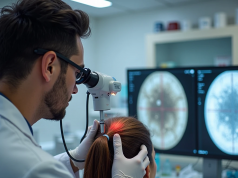Choosing a hair dye is an important step in maintaining the health and beauty of your locks. Today, there are many types of dyes, each with its own features and benefits. In this article we will consider permanent, semi-permanent, temporary, ammonia-free and natural hair dyes, as well as tell you how to choose the right product for coloring with minimal risk to the hair.
1. Permanent hair dyes: what are they?
Permanent dyes are one of the most durable coloring options. They contain ammonia or its substitutes, which allows deep penetration into the hair structure and preserves the color for a long time. The main advantage of permanent dye is durability, it lasts up to 6-8 weeks.
Benefits:
- Durability of the result.
- The ability to color gray hair.
- A wide range of shades.
Disadvantages:
- Can dry your hair.
- Requires regular maintenance after coloring.
How to use permanent hair dyes correctly? It is important to follow the instructions and use moisturizing masks and conditioners after coloring to maintain healthy hair.
2. Semi-permanent hair dyes
Semi-permanent dyes are a less aggressive coloring option that do not contain ammonia. They provide a soft shade, but their durability is limited to 3-4 weeks. Semi-permanent dyes are most often used for light color freshening or to add shine to hair.
Benefits:
- Safe for frequent use.
- Gently affect the structure of the hair.
- Easy to wash off if you don't like the shade.
Disadvantages:
- Can't completely cover gray hair.
- They wash off quickly.
3. Temporary hair dyes
Temporary colors are suitable for those who want to quickly change the look for one evening. These colors can be easily washed off after the first or second wash.
Benefits:
- Perfect for experimentation.
- Easy to rinse off.
- Harmless to hair.
Disadvantages:
- Short-term effect.
- Some temporary paints may leave residue on clothing.
4. Natural colors: henna and basma
Natural dyes such as henna and basma provide natural coloring without harming the hair. Henna gives hair red and copper tones, while basma gives hair darker shades, up to black. These dyes not only color your hair, but also strengthen it, promote growth and regrowth.
Benefits:
- All-natural composition.
- Strengthen the hair.
- They don't cause allergies.
Disadvantages:
- Limited selection of shades.
- The coloring process can be longer.
- It's hard to predict the exact outcome.
How to mix henna and basma to get the desired shade? It is a whole art. For darker shades add more basma, and for lighter shades - henna. Natural colors are best used on clean and slightly damp hair.
5. Non-ammonia hair dyes: how do they differ?
Ammonia-free dyes are a modern version of permanent dyes that use more gentle substances instead of ammonia. They provide gentle coloring without damaging the hair structure, but at the same time may be inferior to classic ammonia dyes in terms of durability.
Benefits:
- Suitable for sensitive scalps.
- Gentle on the hair.
- No pungent ammonia odor.
Disadvantages:
- Less resistant than ammonia dyes.
- May not completely cover the gray hair.
The best ammonia-free home dyes provide natural shine to hair and minimize damage. They are ideal for regular use and maintaining a natural look.
How to choose a hair dye?
- Permanent dyes are best for those who want long-lasting results and are ready for regular hair care.
- Semi-permanent dyes are a great choice for those who don't want a radical color change, but want to freshen up the shade.
- Temporary paints are for bold experimentation for a short period of time.
- Natural dyes are the perfect option for those who strive for naturalness and care about the health of their hair.
- Non-ammonia dyes are for people with sensitive scalps and those who prefer gentle coloring.
Your choice of hair dye depends on your goals, hair type and scalp condition. No matter which dye you choose, it's important to remember to properly care for your hair after coloring to keep it healthy and beautiful. If you're looking for natural shades, it's worth trying henna or basma, and for long-lasting results, permanent dyes are the way to go. Choose the right product for your hair and enjoy beautiful, healthy color!
.
Oxidizing hair dyes
Hair dyesOxidizing hair dyes are oxidizing hair dyes that can stay on the hair for a long time and cannot be washed out with water. They cover the hair evenly and are excellent for coloring gray hair.
Such paints consist of two parts: a chemical reagent, which is not the paint, but acts as an oxidizing agent. Usually hydrogen peroxide of various concentrations is used. And the actual hair dye itself. Both parts - hydrogen peroxide and hair dye - are mixed together just before application. About 20 to 30 minutes after application to the hair, the dye is easily washed off with water. The oldest hair dye company is Schwarzkopf. Over a long period of time, it is constantly improving the technology of production of colors, making them the safest. Schwarzkopf hair dye is always the best choice.
The principle of hair coloring is that small molecules of hydrogen peroxide penetrate deeply into the hair shaft, where they combine to form large molecules. It is these molecules that change the natural color of the hair. These molecules are deep inside the hair shaft. It is impossible to remove them with water. To expand the color range of hair dyes, manufacturers mix different colors in one tone to get the desired shade. "Enemy" of hair dyes is chlorine dissolved in swimming pool water. Under its influence, the color of dyed hair fades over time.
Sometimes hair color after dyeing does not turn out exactly as indicated on the package. This may be due to a reaction when the natural hair color takes part in the formation of the final color.
Toxicity of hair dyes
The toxicity of hair dyes lies in their contact with the scalp. It is at this time that some of the toxic substances in the dyes penetrate the skin and then into the body. Some of them "settle" in the body and are not washed out. Accumulating, these substances can even provoke cancerous tumors. Therefore, it is very important to color your hair, the less often, the better. In particular, this applies to those who dye their hair in dark colors, especially black.
Often after coloring, the hair falls off, especially at the roots of the hair, so that it is difficult to brush. If this happens, it means that the hair has been burned and there is a danger that the hair will break after a while. If this happens, try to make a break between coloring more, wait until the new hair grows to the desired length. And the burnt hair will remain only on the ends of the hair.
Often the cause of hair being burned is the wrong solvent - hydrogen peroxide. There is a rule of thumb that the percentage of hydrogen peroxide is directly related to the difference in hair tone. That is, how much the tone of the native hair differs from the color of the hair that should be after coloring.
The famous company that has been producing the best Schwarzkopf hair dyes for many years has developed a special, very gentle for the hair solvent with an indication of the percentage of hydrogen peroxide. View this company's hair dyes.
Coloring of previously bleached or lightened hair
To color previously bleached or lightened hair that will be dyed to pastel tones, 6% or 20% hydrogen peroxide solvent is used. For coloring native dark hair to be colored in pastel tones, solvent 6% or 20% hydrogen peroxide content is used. To color hair one tone lighter than native hair, 9% or 30% of hydrogen peroxide is used. To lighten hair 2-3 levels - 9% or 30% of hydrogen peroxide, 3-4 levels - 12% or 40% of hydrogen peroxide. For coloring gray hair - 12% or 40% of hydrogen peroxide content.
Hydrogen peroxide must be handled very carefully, as it is very caustic and can cause serious damage if it comes into contact with the skin or eyes.
If you come across a hair dye that supposedly does not contain hydrogen peroxide, this is nonsense. Without hydrogen peroxide, it is impossible to dye hair in a permanent color. It can only be a dye that will stay on your hair for a week or two. Staphylococcus aureus and how I dealt with it.







Or better yet, don't color your hair at all. I also used to color my hair, the result: I can not get rid of the sectioning, and until my hair grows back, this problem will not go away. Good that the colored hair left about 5 cm on the tips. The difference between my colored hair and my own is very visible, my hair looks alive, pleasant to the touch, which can not be said about the colored hair.
[...] has not yet learned how to produce safe hair dyes. Don't believe the advertising. All dyes without exception are toxic [...].